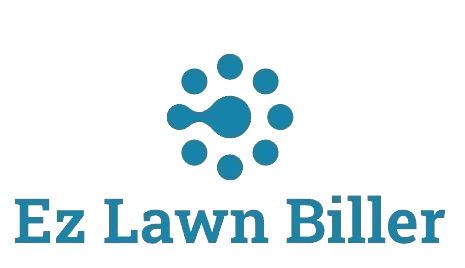Efficient route optimization can dramatically enhance the profitability of your lawn service business. Learn how in this ultimate guide!
The Ultimate Guide to Optimize Routes for Lawn Services
In the competitive world of lawn care, optimizing routes is essential for maximizing efficiency and profitability. With rising fuel costs and increasing competition, lawn service businesses must find ways to streamline their operations. This comprehensive guide will delve into the importance of route optimization, discuss strategies and tools available, and offer practical tips to enhance your lawn service routing.
Effective route optimization can save time, reduce costs, and improve customer satisfaction by ensuring timely service delivery. In this post, we will cover various aspects of route optimization, including the benefits, technology and tools that can help, best practices for implementation, and insights on using lawn service software to gain a competitive edge. Whether you are an independent landscaper or the owner of a larger lawn service company, this guide is tailored for you.
The Importance of Route Optimization
Route optimization in lawn services is the process of determining the most efficient path for technicians to follow when servicing multiple clients. A well-planned route reduces travel time and fuel costs, ultimately leading to increased productivity. According to recent studies, companies that implement effective route optimization strategies can experience up to a 30% reduction in fuel expenses.
Consider a scenario where a lawn service technician is scheduled to visit five clients within the same area. Without route optimization, the technician may waste time driving back and forth between jobs, leading to inefficiencies. By optimizing the route, the technician can complete all five jobs in a more streamlined manner, resulting in both time and cost savings.
Moreover, route optimization directly impacts customer satisfaction. When lawn service providers arrive on time and complete jobs efficiently, clients are more likely to recommend your services to others. This positive word-of-mouth can be a powerful marketing tool for your business.
Tools and Technologies for Route Optimization
In today’s digital age, various technologies can assist with route optimization. These tools not only help plan the most efficient routes but also allow for real-time updates and adjustments based on changing conditions.
One popular solution is GPS routing software, which provides real-time navigation and traffic updates. Many lawn service companies are now using dedicated lawn service software that includes optimized routing features. These platforms streamline operations by integrating scheduling, invoicing, and client management with routing capabilities. For example, [Lawn Biller Software](https://ezlawnbiller.com/) is an innovative solution designed to simplify billing while offering robust tools for managing client routes efficiently.
Furthermore, mobile applications designed specifically for lawn care businesses allow technicians to access optimized routes on-the-go. These lawn company apps can send alerts for any delays or changes, ensuring that the team is always informed and able to adjust accordingly. By leveraging these technologies, lawn service businesses can significantly enhance their operational efficiency.
Best Practices for Implementing Route Optimization
Implementing effective route optimization strategies requires careful planning and execution. Here are some best practices to consider:
- Analyze Historical Data: Review past service records to identify common routes and peak service times. This analysis can provide valuable insights into trends and help inform future route planning.
- Prioritize Jobs: Establish a priority system for jobs based on factors such as the type of service, client history, and geographical location. This will help in determining which jobs to schedule first, optimizing the overall route.
- Use Dynamic Routing: Instead of sticking to a fixed route, embrace dynamic routing that adapts to changes in real-time. This includes traffic updates, weather conditions, and last-minute appointments, ensuring that the most efficient route is always taken.
- Incorporate Customer Preferences: Take into account your clients’ preferences for service times. Some clients may prefer morning or evening services, and accommodating these preferences can improve satisfaction and retention.
- Regularly Review and Adjust Routes: Continuous improvement is key to route optimization. Regularly assess the efficiency of your routes, and make adjustments as necessary to ensure optimal performance.
Leveraging Lawn Service Software for Enhanced Routing
Lawn service software plays a crucial role in streamlining operations, including route optimization. Investing in a comprehensive lawn service app can simplify various tasks from scheduling to billing, all while integrating route optimization features. By utilizing a lawn billing software that offers these functionalities, lawn care businesses can ensure that they are operating at peak efficiency.
For instance, platforms like [EZ Lawn Biller](https://ezlawnbiller.com/) provide a user-friendly interface that not only automates invoicing but also incorporates service tracking and scheduling capabilities. This means that lawn care businesses can efficiently manage their routes while keeping track of service records and client communications in one place.
Additionally, using service company software with mapping and routing capabilities can significantly reduce planning time. By automating route generation based on service locations, technicians can spend less time on logistics and more time delivering high-quality services to clients.
Case Studies of Successful Route Optimization
Examining case studies of lawn service businesses that have successfully implemented route optimization can provide valuable insights and inspiration. For instance, a mid-sized landscaping company in Atlanta adopted GPS routing software and saw an immediate impact on their operations. By analyzing their service patterns and optimizing routes, they reduced their fuel costs by 25% within the first year.
Another example is a lawn care company based in Chicago that integrated a lawn service computer program into their operations. By utilizing this software, they were able to streamline their invoicing process while also improving their routing efficiency. As a result, they reported a significant increase in customer satisfaction as jobs were completed more promptly and without errors.
These success stories emphasize the importance of adopting modern technology and best practices for route optimization. By learning from others in the industry, lawn service providers can adopt strategies that suit their unique business models and enhance their service offerings.
Conclusion
In conclusion, optimizing routes for lawn services is not just a luxury; it is a necessity for businesses aiming to thrive in a competitive market. By implementing effective routing strategies, utilizing advanced technologies, and continuously assessing and improving operational processes, lawn care providers can achieve significant time and cost savings.
Moreover, investing in innovative solutions like [Lawn Biller Software](https://ezlawnbiller.com/) can further enhance your operational efficiency, making it easier to manage client relationships and service schedules. As you embark on your journey to optimize your routes, remember that the ultimate goal is to provide exceptional service to your clients while growing your business sustainably.
Don’t hesitate to start implementing these strategies today, and watch your lawn service business flourish.




